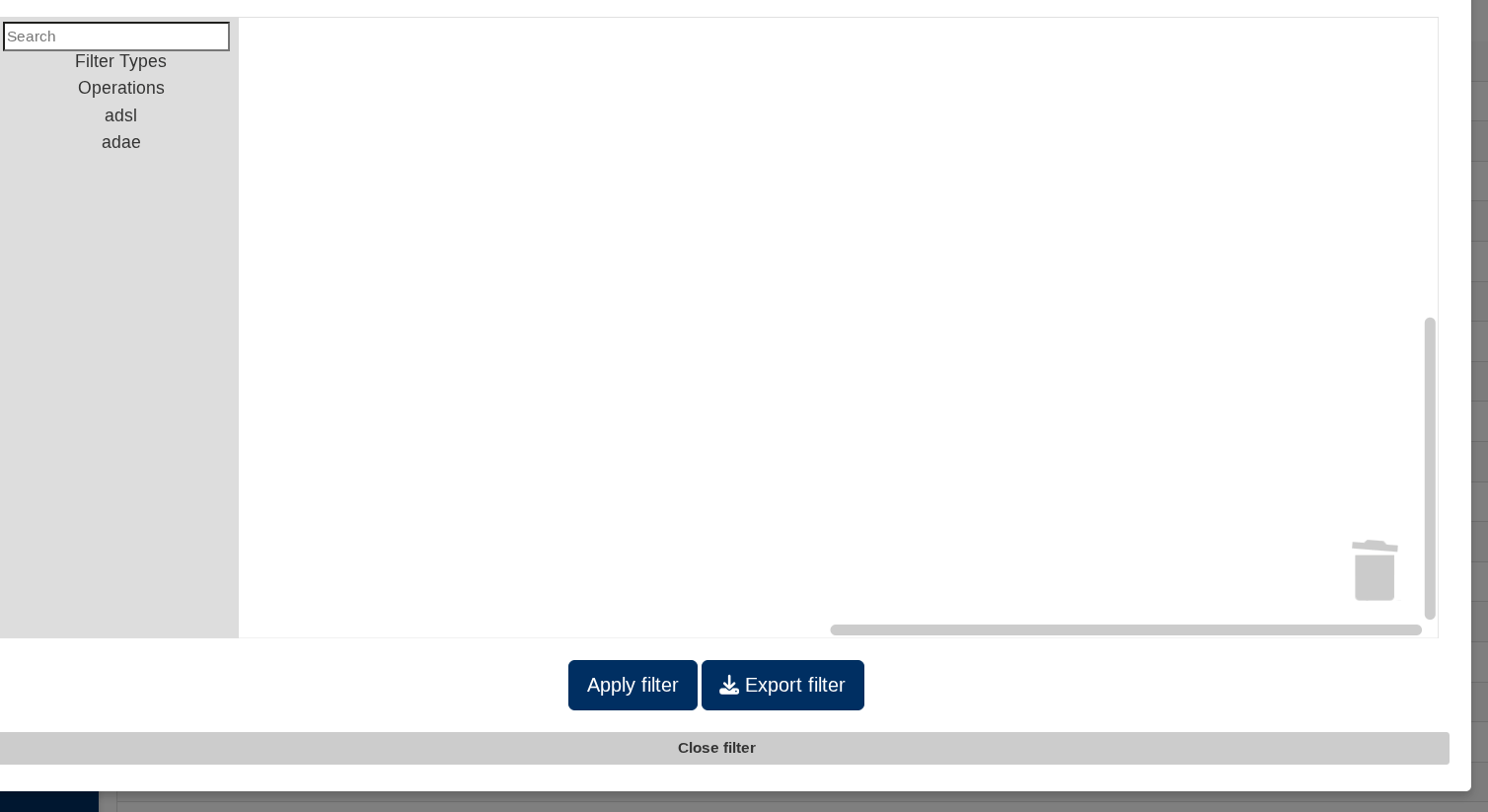(DEVELOPMENT) Blockly Filter
blockly_filter.RmdUsing the development blockly Filter
Note that this filter is still in development stage and should not be used in production apps.
To activate this functionality, you only have to set the
filter_type argument to blockly.
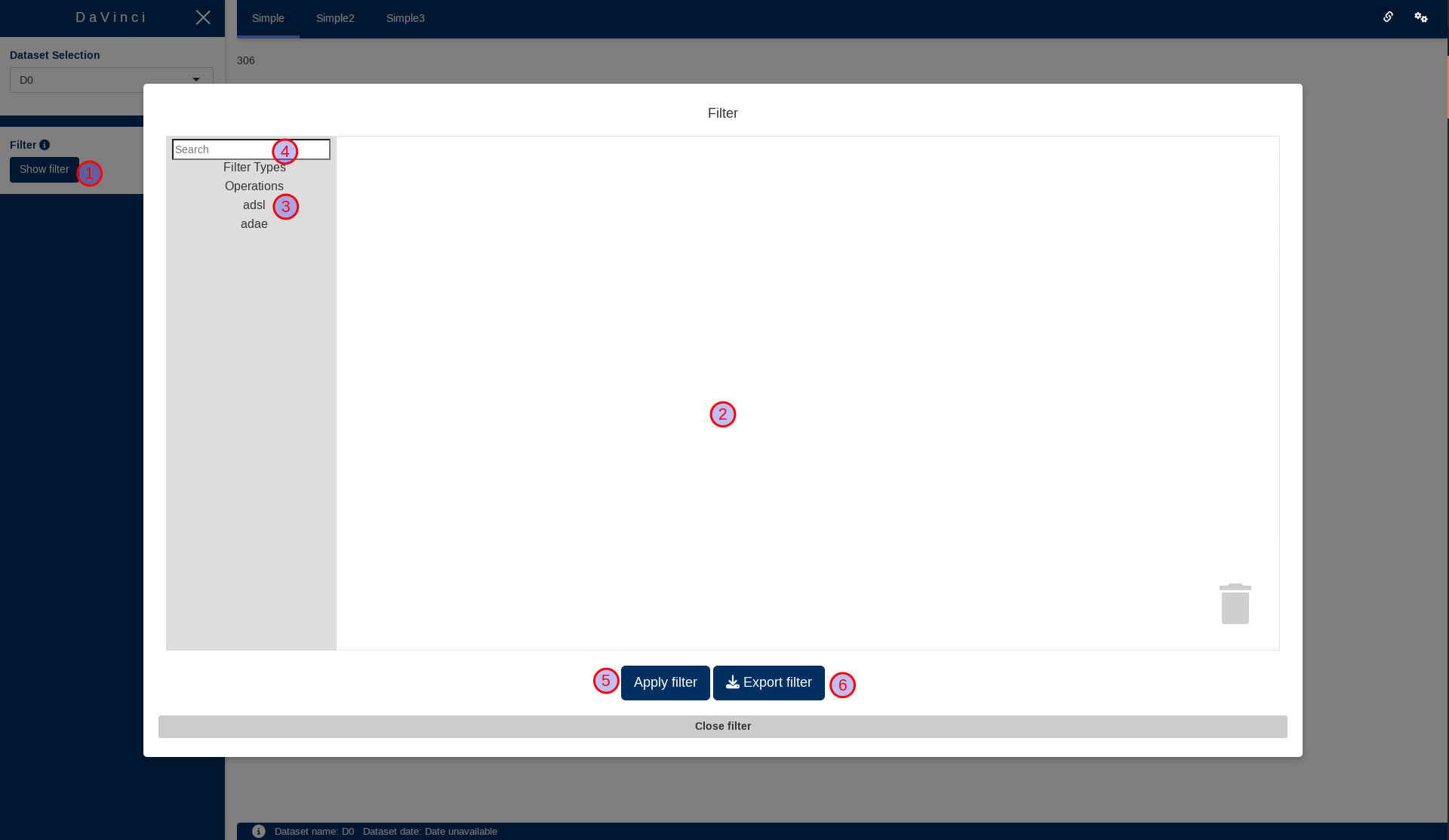
On this application you will notice that there are no filters on the left side but only a “Show filter” (1) button appears. When clicked this button will open the filter modal where you can design your filter.
The filter works by selecting blocks from the categories (3), or by searching using the search box in (4), in to the canvas (2) that then are connected to create a filter.
Once a filter is created it can be applied by pressing the “Apply filter” (5). Notice that, opposed to the previous filter, it is not applied automatically and it must be applied explicitely.
Description of pieces
Filter Type pieces
All filters start with one of the pieces under the Filter Types section at the root of the filter. Only one of each of these pieces can be present in the canvas at any moment, one describing the filtering for the adae dataset, another for the adlb dataset, etc.
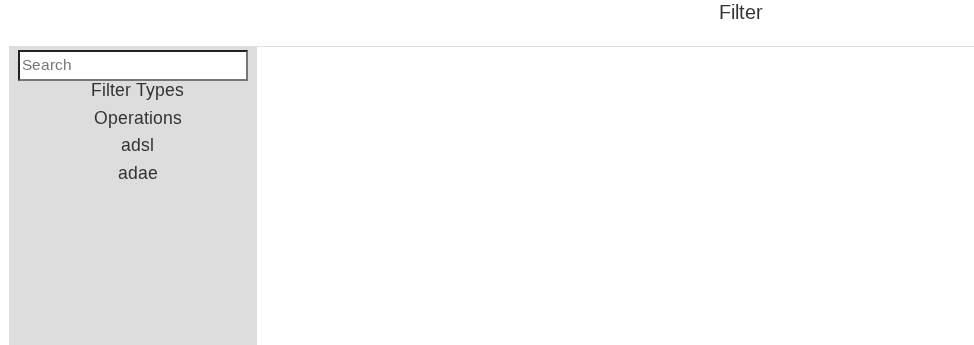
Notice that there two main types of filters, Dataset Filters and Subject Filters.
Variable pieces
In the toolbox there will be one section per dataset in the application. Under each of this sections you will find a piece for each of the variables in the dataset.
You can drag these pieces to create filters.
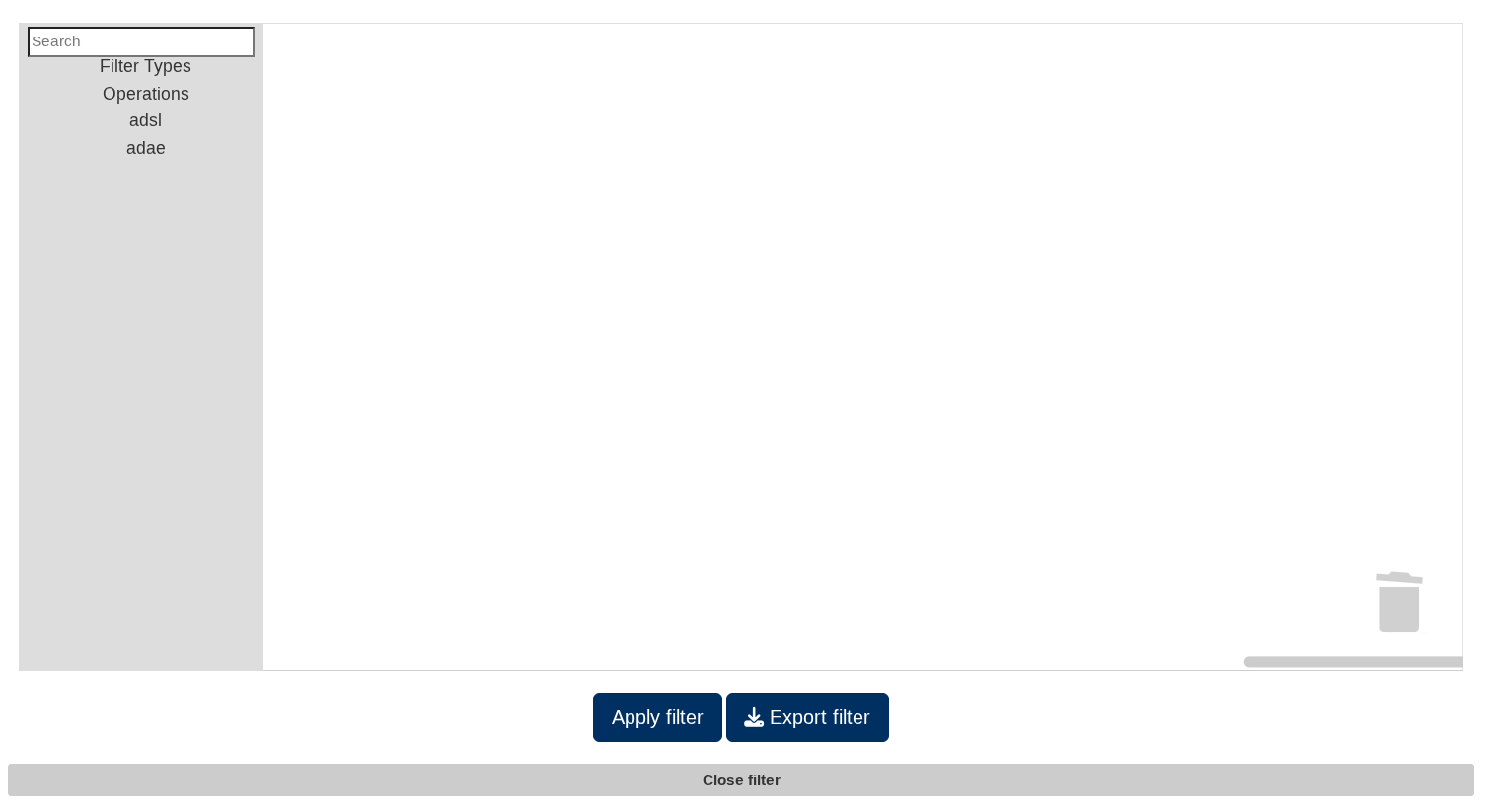
In the animation above we have created a simple filter that filters the adae table to rows in which the Lowest Level Term is ABDOMINAL CRAMPS
To create more complex filters we will use the combination operations available in the Operations toolbox section.
Operation pieces
Operation pieces are divided in two big groups:
- Pieces used to combine variable pieces
- Pieces used to combine sets
Combining variable pieces
First we will describe the and, or and not operations used to combine variable pieces from the same dataset. These are purple-colored and can be found under the Operations section in the toolbox.
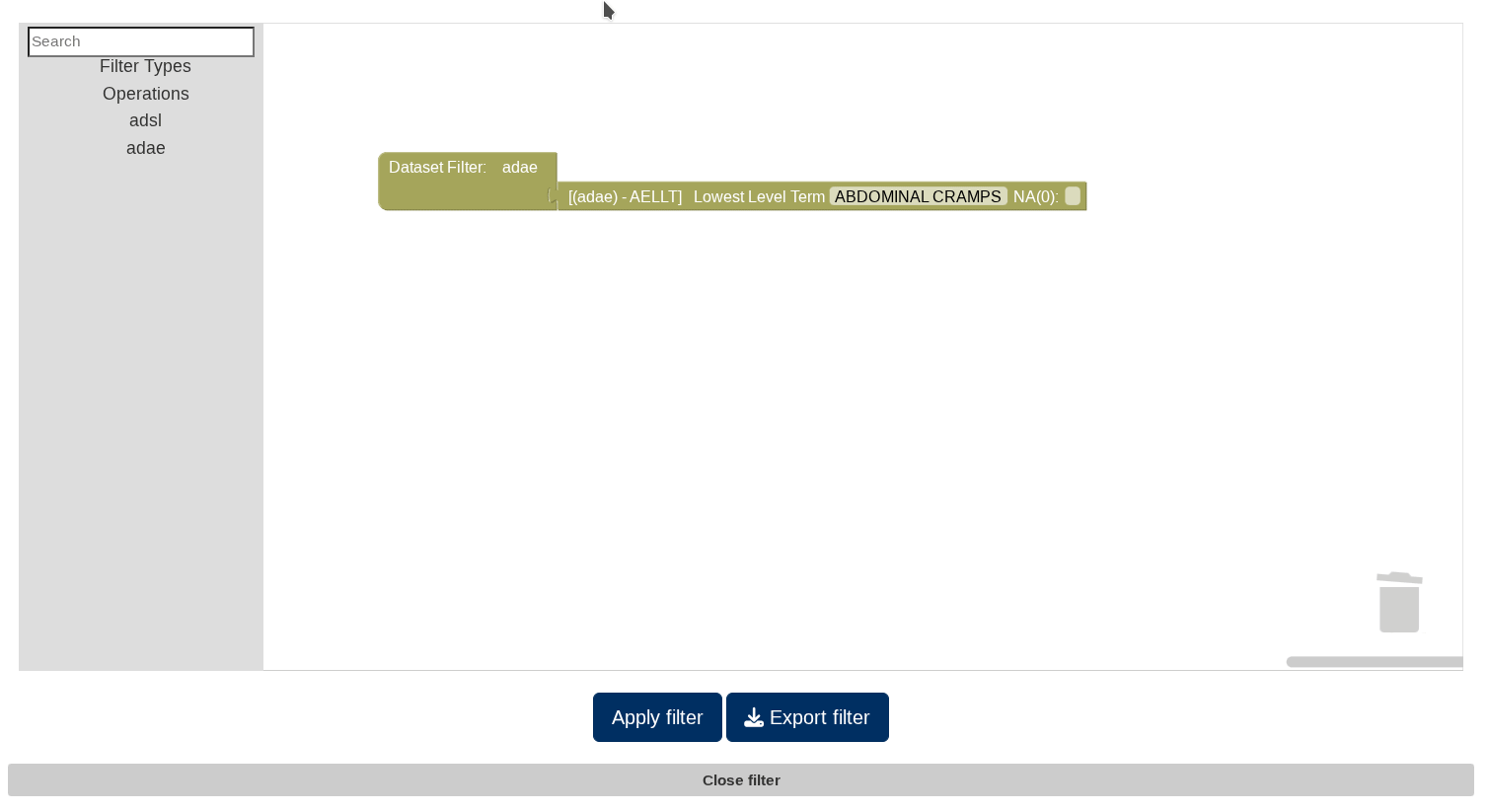
These pieces allow to create more complex filters, for example in the gif above we create a filter that filters the adae table to rows in which:
- The Lowest Level Term is ABDOMINAL CRAMPS and the Severity is SEVERE
- The Lowest Level Term is ABDOMINAL CRAMPS or the Severity is SEVERE
- The Lowest Level Term is ABDOMINAL CRAMPS or the Severity is not SEVERE
There is not a single way of expressing a filter, therefore the same filter may be expressed, by different selections in the variable menus, or by different Combining Operations.
Combining sets
First we will describe the union, intersect and complement operations (see) used to combine sets to select a subpopulation of interest across the whole application.
These are green-colored and can be found under the Operations section in the toolbox.
For example in the gif below we create a filter selects a subpopulation that contains:
- All Female subjects between 60 and 70 intersect all subjects that have had any adverse event with Severity Severe.
- All Female subjects between 60 and 70 union all subjects that have had any adverse event with Severity Severe
- All Female subjects between 60 and 70 union with the complement of all subjects that have had any adverse event with Severity Severe
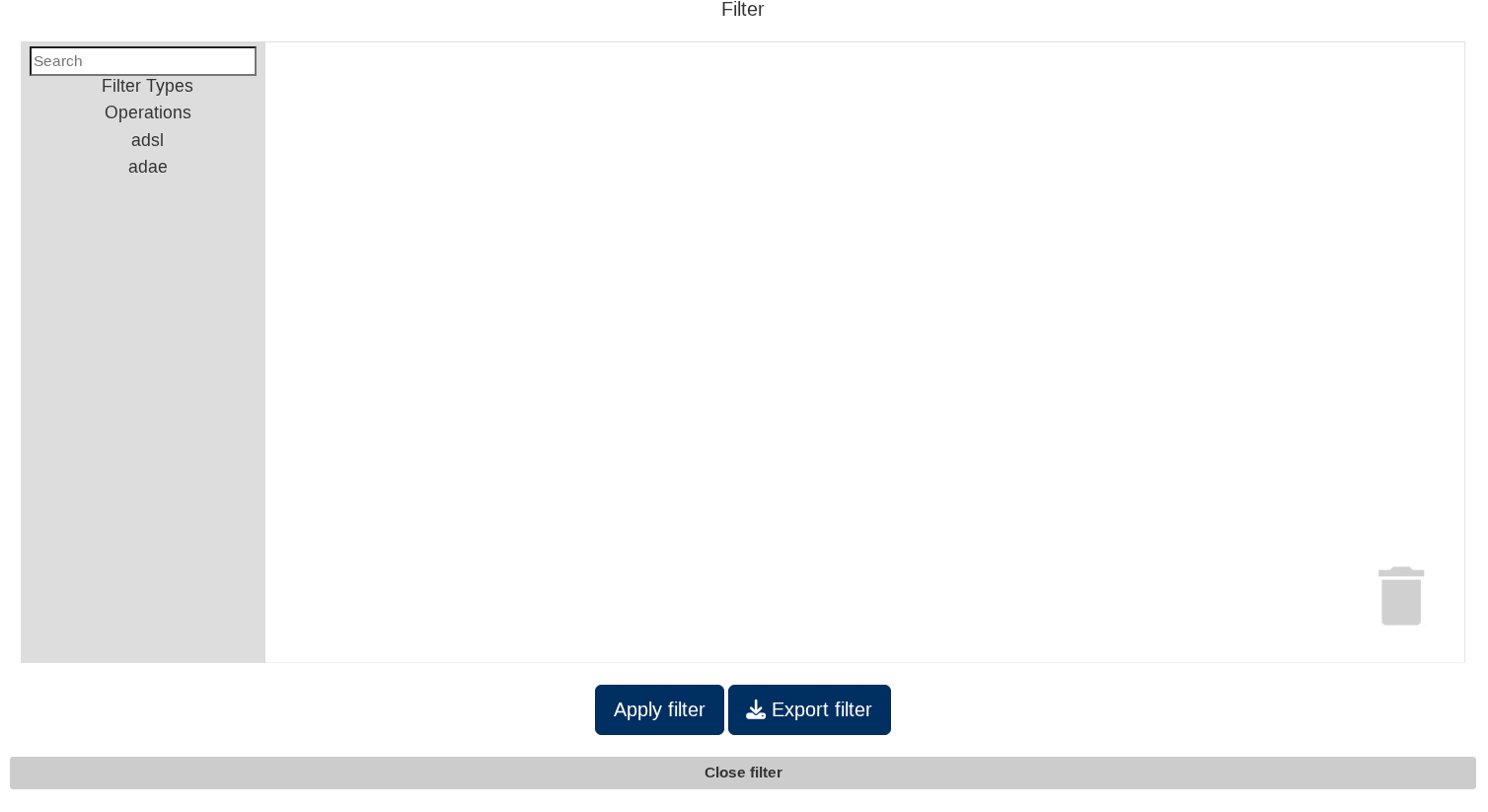
Piece restrictions
Several restrictions are in place to avoid incorrect configurations of the filter:
- Variable and Combining variable pieces can have any parent.
- Combining variable pieces can only have as children another Combining variable piece or a variable piece.
- Any variable pieces under a given combining variable piece, regardless of depth, must belong to the same dataset.
- Combining set pieces can have as parent another combining set piece or the Subject Filter piece.
- Combining set pieces can have any piece as children.
The controls in the application prevent that any of the above actions is performed in the filter canvas.
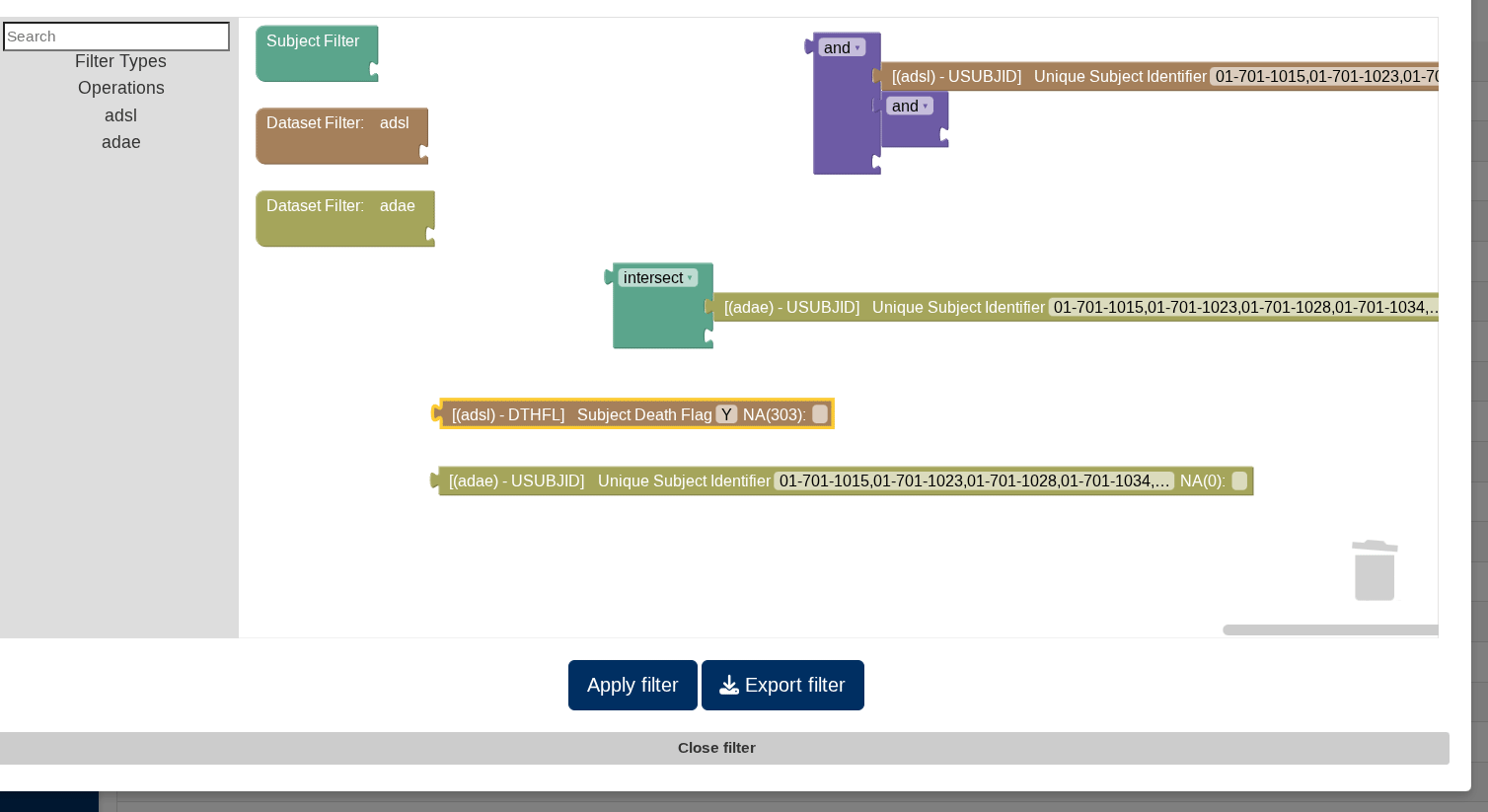
Example application
Find below an application that allows testing the filter.
# Notice the usage of ::: as several of the functions are not exported yet
# until a final version of the filter is provided
dv.manager:::run_ap(
data = list(
"D0" = list(
adsl = dv.manager:::get_pharmaverse_data("adsl"),
adae = dv.manager:::get_pharmaverse_data("adae")
),
"D2" = list(
adsl = dv.manager:::get_pharmaverse_data("adsl"),
adae = dv.manager:::get_pharmaverse_data("adae")
)
),
module_list = list(
"Listing" = dv.listings::mod_listings("mod_listing", c("adsl", "adae"))
),
filter_data = "adsl",
filter_key = "USUBJID",
filter_type = "blockly"
)Exporting a filter and using it as a preset filter
A given state of the filter can export a filter to a file using the “Export Filter” button. This file can then be used in the app call as a preset filter.
# Notice the usage of ::: as several of the functions are not exported yet
# until a final version of the filter is provided
dv.manager:::run_app(
...,
filter_type = "blockly",
filter_default_state = "path/to/filter/file.json"
)Known issues and FAQ
- Is bookmarking supported?
- Yes.
- One of the “AND”/“OR” pieces has no connections, what do I do?
- Delete it and drag a new one.
- The search box does not work?
- At least three characters must be used in the search box before it starts searching.
- I have applied the filter but no filtering is happening.
- Check that there are no unconnected pieces. If any piece is not connected the filter cannot be applied.
- I have made a selection for a categorical variable but it is not
correctly applied.
- When selecting categorical variables it is required that the dropdown menu is closed before the selection can be applied.
